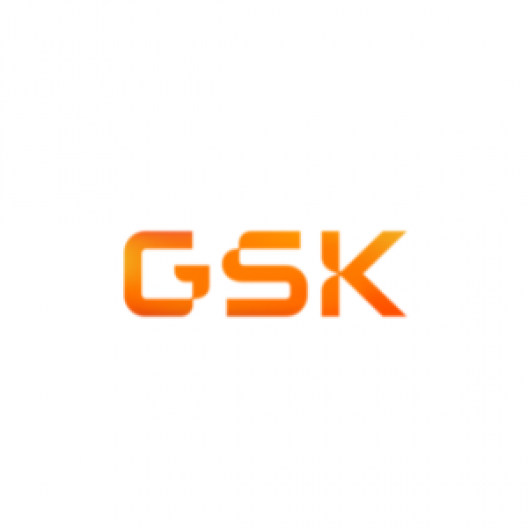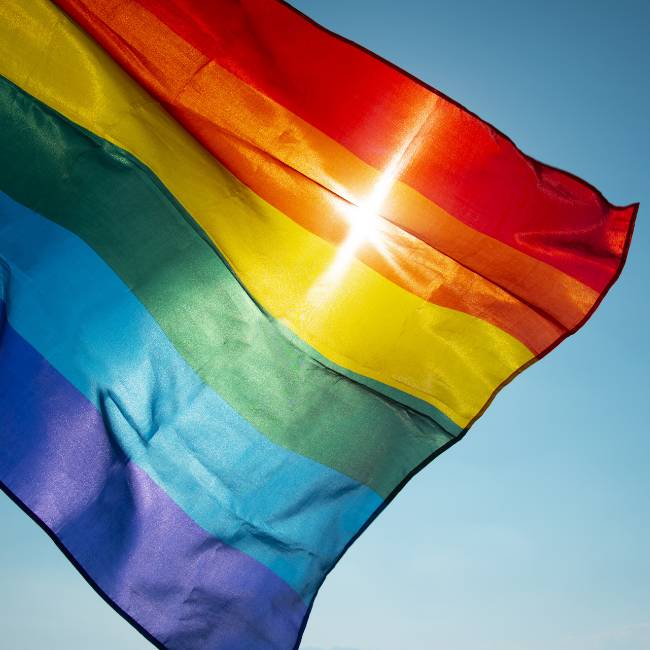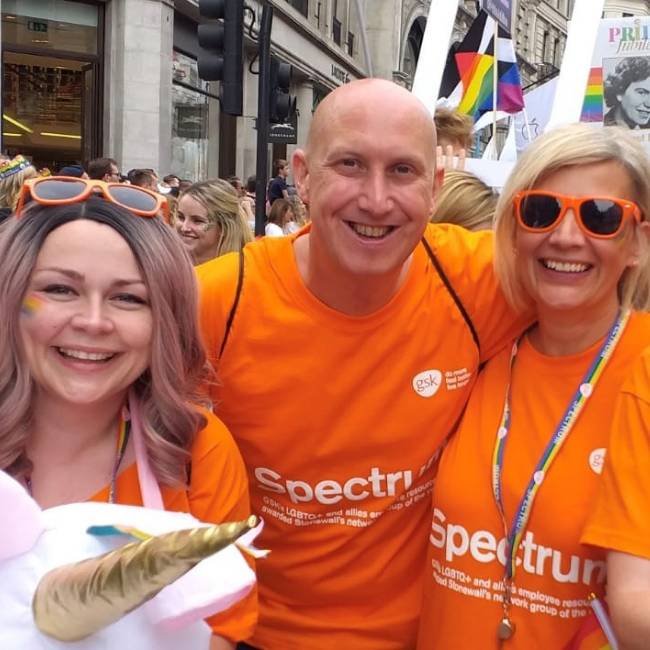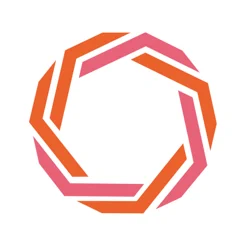
More Than Just a Rainbow Flag
By Lee, Investigator, Research & Development, GSK Pharma | UK Leadership Team Member of Spectrum, GSK’s LGBTQ+ Employee Resource Group | R&D Inclusion Champion
The rainbow flag has been the most widely recognised symbol of the LGBTQ+ community since 1978 when Gilbert Baker’s design first appeared in the San Francisco Gay Freedom Day Parade. The original flag featured eight coloured stripes, each having a different meaning. Hot pink represented sex at the top, red for life, orange for healing, yellow for sunlight, green for nature, turquoise for art, indigo for harmony, and violet for spirit at the bottom. The Paramount Flag Company then produced a version of the flag without hot pink and turquoise, which were replaced with blue for practicality reasons during production.
While the rainbow flag is now a prominent symbol at Pride celebrations around the world, an interesting fact is that the design cannot be trademarked. As a result, many variations of the rainbow flag can now be found in corporate branding, frequently used as a symbol of support for the LGBTQ+ community. Baker's original flag design has even been revised by the LGBTQ+ community themselves, and in 2018, a graphic designer named Daniel Quasar added a five-coloured chevron to his reproduction of the rainbow flag to emphasise "inclusion and advancement." This new "Progress Pride Flag" from Quasar has black and brown stripes to represent marginalised LGBTQ+ communities of colour, as well as pink, light blue, and white to embody the colours of the Transgender Pride Flag. More recently, and throughout the Covid-19 pandemic, the rainbow has been more widely used as a public 'thank you' to the NHS and other frontline workers.

The use of the rainbow flag in relation to the pandemic has created ambiguity around what the flag represents, which has become problematic for many LGBTQ+ people. For the LGBTQ+ community, the rainbow flag is more than just a symbol. A rainbow flag is used almost like a signal, to help LGBTQ+ people identify safe spaces and navigate a society where there has been a steady rise in hate crime in England and Wales. It is also used to identify allies and those people who support the LGBTQ+ community, who will often wear the symbol to indicate so; whether that be a rainbow pin badge attached to their clothes; or a brightly coloured lanyard around their neck.
To put things into context, my partner was diagnosed with kidney cancer near the end of 2019, just before the first wave of the Covid-19 pandemic. This was a difficult time of uncertainty, and we were soon on a journey where we had no other choice than to place our trust in the health professionals who were caring for us. On the day of my partner’s biopsy, I remember sitting at his hospital bedside watching the nurses as they registered in other patients on the ward. Our conversations should have been around his procedure, with me offering a few final words of support; however, we were preoccupied with thoughts about ‘coming out’, fearing discrimination; and we were concerned the hospital policy may not recognise partner rights for unmarried same-sex couples. Our concerns were not unwarranted, either: a Stonewall survey from the previous year identified that half of LGBTQ+ patients experienced inequities in their NHS healthcare. According to the poll, one in five LGBTQ+ people do not disclose their sexual orientation to a healthcare provider while seeking general medical care, and one in seven LGBTQIA+ people have avoided treatment for fear of discrimination. I had also been stigmatised by healthcare professionals in the past, in direct response to me being open with them about my sexuality.

Nonetheless, our concerns were quickly alleviated; when we noticed that the duty nurse approaching us was wearing an NHS Rainbow Badge attached to her uniform, and a rainbow coloured lanyard around her neck. The badge was a special rainbow edition of the NHS logo which are handed to NHS staff who have pledged to reduce inequalities and provide support and signposting to LGBTQ+ people.
For us, there was a sigh of relief as we realised we could be open and honest about our relationship with this member of staff. in present times, it’s now more difficult to ascertain the true meaning behind this person’s rainbow symbol, specifically since the launch of the NHS rainbow Covid-19 ‘thank you’ campaign. And with copies of the NHS Rainbow Badge readily available through online shopping sites, it’s almost like the LGBT+ rainbow campaign within the NHS has been erased. It certainly distorts our community’s ability to identify visible LGBTQ+ allies and to navigate safe spaces, which is sad.
I think we can agree that we owe a great debt of gratitude to our NHS and frontline workers, who have been so heroic in their efforts to protect us and our loved ones throughout the pandemic; and I’m not denying they deserve our support. I also appreciate the rainbow has been a symbol of hope for many people during a difficult time; and has united us as a wider community. But this LGBT+ History Month, I ask everyone to take a moment to think about the historical importance of the rainbow flag to the LGBTQ+ community, and the meaning of its symbolism to us; in the hope that by sharing my story, it will raise some awareness and understanding of the issues we continue to face within society today.
This is a personal article and is not published on behalf of GSK.
GSK is committed to fair, equal employment opportunity and inclusion of all employees regardless of race/ ethnicity/ national origin, gender/ gender identity, disability, sexual orientation, religion/belief, marriage/ civil partnership status, age and / or socio-economic status.
References
[1] Gonzalez, N. (2020) How did the rainbow flag become a symbol of LGBTQ Pride?
[2] Murray, E and Frugé, D (Lexology, 2019) The Rainbow Flag, Trademarks and Commitment to Diversity
[3] Home Office Official Statistics, Hate crime, England and Wales, 2020 to 2021 (GOV.UK, Published 12 October 2021)
[4] Bachmann, Chaka L. (Stonewall) and Gooch, Becca (YouGov) LGBT IN BRITAIN HEALTH REPORT

